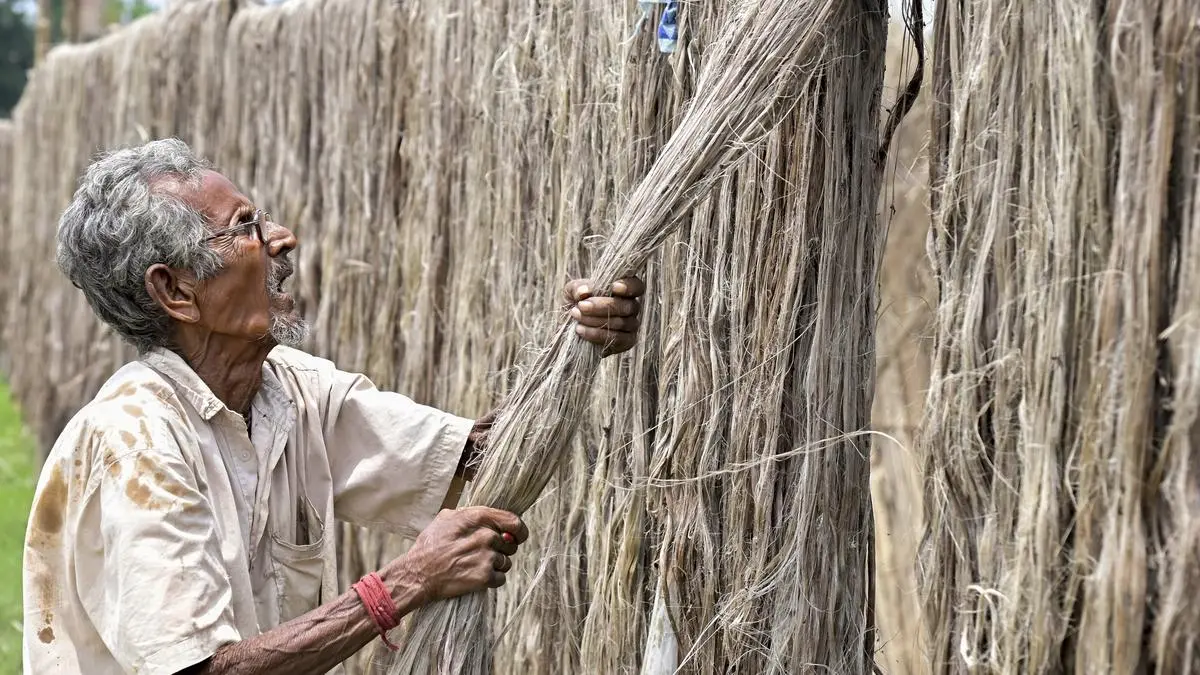By Mithun Dasgupta
Copyright thehindubusinessline

India’s raw jute production will likely be the same as last year on good yield aided by rain, though there has been a slight decrease in the total area sown under jute in the current season.
With jute prices ruling at a record high, jute growers could be enjoying one of the best years this time. The country’s raw jute production in 2024-25 was around 75 lakh bales(180 kg).
“Last year the total sowing area was around 4.90 lakh hectares, while this year total area under jute cultivation has been 4.70 lakh hectare. As the yield has been good, so more or less raw jute production is expected to be similar to last year,” Indian Jute Mills Association (IJMA) Chairman Raghavendra Gupta told businessline.
“Last year, during the harvest season, prices of raw jute were around the MSP level. That was the reason behind the lower sowing area for this year,” Gupta pointed out.
New entrants
Jute is cultivated mainly in seven States — West Bengal, Bihar, Odisha, Assam, Tripura, Meghalaya and Andhra Pradesh.
“Our estimate is that the production for this year would be similar compared to last year. As rains have been good this time. it has improved both yield and quality of raw jute,” said Jute Commissioner Moloy Chandan Chakrabortty.
“Jharkhand and Nagaland have started cultivation of jute as well. In Jharkhand for the last two-three years, raw jute production has been rising. This year, in the State, sowing area was around 5,000 acres,” Chakrabortty informed.
Prices of the raw jute are currently one of the highest ever, backed by higher demands and speculations, as India has earlier this year imposed a ban on imports of jute products and ropes from Bangladesh. Currently, the weighted average price of raw jute is ₹8,143 a quintal against the minimum support price of ₹5,650 fixed by the Centre for this crop year to June 2026. A year ago, prices ruled at ₹5,065.
A notification issued by the Directorate General of Foreign Trade (DGFT) in August stated that items such as jute fabrics, twine, ropes, and bags can now enter India only through the Nhava Sheva Seaport in Maharashtra.
Protecting domestic sector
The move is aimed at quality control or protection of domestic industry, according to the Central government. The banned products include bleached and unbleached woven fabrics of jute or of other textile bast fibre; twine, cordage, rope of jute; and sacks and bags of jute. Imports of these products from Bangladesh will not be allowed from any land port on the India-Bangladesh border.
Jute industry insiders said the ban on jute items from Bangladesh will help Indian jute industry in the long-run. However, Indian jute exports will get impacted at present as exporters used to make use of high quality raw jute from the neighbouring country for high-priced exportable products for overseas markets.
The government demands for jute bags used in the packaging of foodgrains remain robust. “The projected demand for procurement of bags for this Khariff season up to November is about 18 lakh bales. The season started in May. The supplies are on schedule,” Gupta said.
(This is the eighth and the last in the series of reports on kharif outlook)
Published on September 19, 2025



